This first ones for Mum, for every meal you put on the table. Thank you x 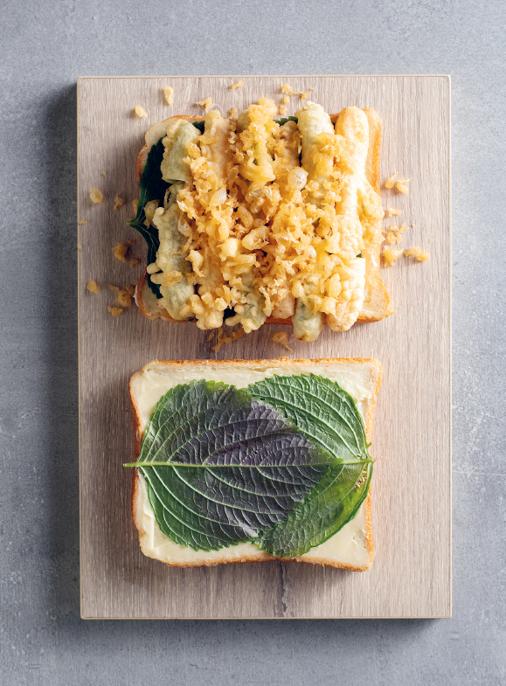

Contents


In Japan, sando are everywhere: on convenience store shelves, Shinkansen (bullet train) menus and even in vending machines. Their rising popularity in the West over the past decade means sando now appear on the menus of high-end restaurants and hipster pop-ups everywhere. But what is it about these unassuming, typically crustless sandwiches that has garnered such a cult following? Sando falls into the culinary food group of
yshoku (

), which roughly translates as Western food. These are Japanese versions of popular dishes and include
karraisu (curry rice, a Japanese interpretation of classic curry),
hambagu (hamburger or beef patty),
omurice (fried rice encased in an omelette) and
korokke (a take on the French croquette). Perhaps the popularity of sando is due to their seemingly simple design.
As with all great inventions, however, sando are not always as they seem. They are a culinary example of the Japanese pursuit of perfection, but what makes sando unique among sandwiches is that they are wrapped and pressed. This unites the filling and bread so that, when cut, they make a beautiful cross-section. They are usually served chilled or at room temperature, but almost never hot, even with a katsu filling. The bread used in sando is called shokupan ( ). This sweet, light milk bread is as ubiquitous in Japan as katsu, gyoza, udon and ramen.
). This sweet, light milk bread is as ubiquitous in Japan as katsu, gyoza, udon and ramen.
Bread in Japan can be dated back to the 16th-century trade with Portuguese missionaries. When Christianity was banned in the 19th-century Edo period, any form of bread went with it. Bread made a comeback to the Japanese diet with the advent of World War II. Similarly to the rest of the world, Japan faced enormous food shortages, even with German-delivered wheat. Made from milk, yeast, butter, sugar, salt and wheat flour, shokupan was allegedly first baked by Japanese soldiers using nothing but a baking tin, jumper leads and the battery from a tank! Fast forward to the 1970s, when Japan eagerly embraced bread culture, and the sando was born. 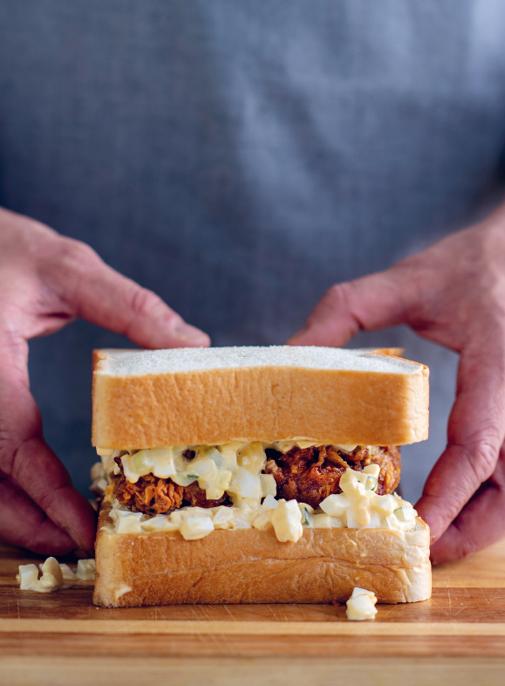
 AMAEBI PRAWNS (SHRIMP)
AMAEBI PRAWNS (SHRIMP) These sweet prawns are native to the cold waters of northern Japan and Russia.

 AMAEBI PRAWNS (SHRIMP)
AMAEBI PRAWNS (SHRIMP) These sweet prawns are native to the cold waters of northern Japan and Russia.
They are prized for their sweetness and are preferably eaten raw or barely cooked. BONITO FLAKES Also known as katsuobushi or okaka, these fine shavings of dried skipjack tuna fillet are one of the hero ingredients in dashi kombu, the base broth for many Japanese dishes. DASHI KOMBU A base stock made from kombu (dried kelp), bonito flakes and water. It is always best to make this aromatic stock from scratch. Avoid the pre-packaged stuff it doesnt compare in flavour. FURIKAKE A sprinkle seasoning for rice and, in some cases, protein.
It comes in a plethora of combinations. Said to be more than 900 years old, modern furikake was invented in the Taish Era (19121926). JAPANESE CURRY MIX A roux-thickened curry sauce adapted to the Japanese palate. Introduced in the Meiji Era (18681912) when the Asian subcontinent was under British rule, kar (curry) is a long-standing member of yshoku in Japan. JAPANESE MAYO The secret to the complex taste of Japanese mayo is that it uses a blend of vinegars, such as rice vinegar, apple cider vinegar and red wine vinegar. 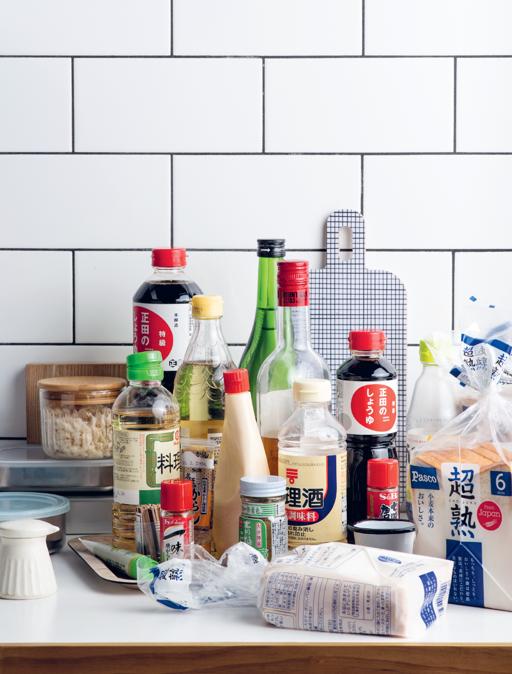 KARASHI MUSTARD Hot, slightly bitter and with a distinctive horseradish taste, karashi is made by crushing brown mustard seeds (Brassica juncea).
KARASHI MUSTARD Hot, slightly bitter and with a distinctive horseradish taste, karashi is made by crushing brown mustard seeds (Brassica juncea).  KARASHI MUSTARD Hot, slightly bitter and with a distinctive horseradish taste, karashi is made by crushing brown mustard seeds (Brassica juncea).
KARASHI MUSTARD Hot, slightly bitter and with a distinctive horseradish taste, karashi is made by crushing brown mustard seeds (Brassica juncea).
You can use it as a pickling agent, filling or condiment. KOMBU A dried brown kelp, umami-rich kombu is not to be confused with nori (which is thinner and shredded). When buying, look for minimal breakages, and a product that is kelp only, with no added ingredients. NAMA PANKO Freshly torn breadcrumbs commonly made from shokupan, these are two or three times larger than dried panko. When fried, nama panko create an intensely crisp and light crumb. NORI This dried red algae is made by shredding seaweed and pressing it into thin sheets, in a process similar to that of making paper. NORI This dried red algae is made by shredding seaweed and pressing it into thin sheets, in a process similar to that of making paper.
Coming in many varieties, nori also has health benefits, with 10 times more calcium than milk! SHICHIMI TGARASHI Commonly known as seven spice, tgarashi is Japanese for red pepper (Capsicum annuum), which gives this mix its spicy character. A for this spice mix can be found. SHIRO MISO Made by fermenting soybeans and rice, shiro miso is typically aged for a shorter period than the darker miso varieties shinshu (yellow) and aka (red). It has a salty, sweet richness thats slightly toasted and deeply savoury. Shiro miso also works brilliantly in desserts. SHISO (PERILLA) LEAF A herb in the mint family (Lamiaceae), that tastes of mint, tarragon, basil, cinnamon and anise.
It pairs well with fatty fish, such as tuna and salmon, and even some fruits and vegetables. SHOKUPAN Otherwise known as milk bread, this bread is unique for the process by which its made. You start with a tangzhong (similar to a roux) that you add to the dough, which helps to retain the lightness and moisture once baked. Shokupan is available to purchase from most Japanese or Asian grocers, but if your local store doesnt stock it, then thick-cut white bread is a great alternative. SHOYU Essentially Japanese soy sauce, it can be dark (koikuchi) or light (usukuchi). TONKATSU SAUCE A blend of stewed fruits and vegetables seasoned with salt, sugar and vinegars. Tonkatsu sauce was adapted from yshoku cuisine, and dates back to the 1930s. Tonkatsu sauce was adapted from yshoku cuisine, and dates back to the 1930s.
A for this sauce can be found. TSUYU SAUCE
Next page
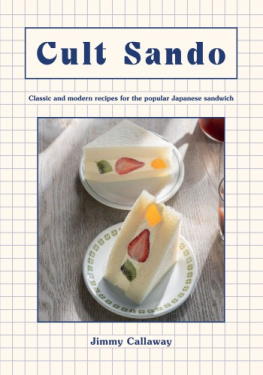


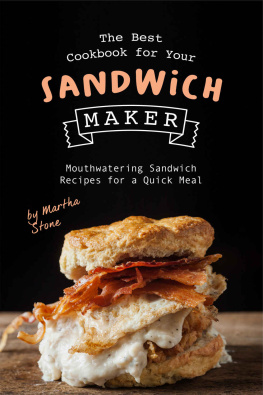




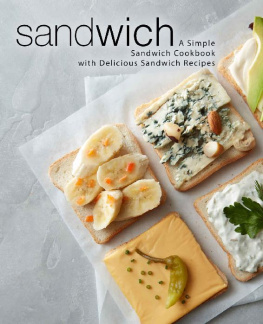





 In Japan, sando are everywhere: on convenience store shelves, Shinkansen (bullet train) menus and even in vending machines. Their rising popularity in the West over the past decade means sando now appear on the menus of high-end restaurants and hipster pop-ups everywhere. But what is it about these unassuming, typically crustless sandwiches that has garnered such a cult following? Sando falls into the culinary food group of yshoku (
In Japan, sando are everywhere: on convenience store shelves, Shinkansen (bullet train) menus and even in vending machines. Their rising popularity in the West over the past decade means sando now appear on the menus of high-end restaurants and hipster pop-ups everywhere. But what is it about these unassuming, typically crustless sandwiches that has garnered such a cult following? Sando falls into the culinary food group of yshoku ( ), which roughly translates as Western food. These are Japanese versions of popular dishes and include karraisu (curry rice, a Japanese interpretation of classic curry), hambagu (hamburger or beef patty), omurice (fried rice encased in an omelette) and korokke (a take on the French croquette). Perhaps the popularity of sando is due to their seemingly simple design.
), which roughly translates as Western food. These are Japanese versions of popular dishes and include karraisu (curry rice, a Japanese interpretation of classic curry), hambagu (hamburger or beef patty), omurice (fried rice encased in an omelette) and korokke (a take on the French croquette). Perhaps the popularity of sando is due to their seemingly simple design.  ). This sweet, light milk bread is as ubiquitous in Japan as katsu, gyoza, udon and ramen.
). This sweet, light milk bread is as ubiquitous in Japan as katsu, gyoza, udon and ramen.
 AMAEBI PRAWNS (SHRIMP) These sweet prawns are native to the cold waters of northern Japan and Russia.
AMAEBI PRAWNS (SHRIMP) These sweet prawns are native to the cold waters of northern Japan and Russia.  KARASHI MUSTARD Hot, slightly bitter and with a distinctive horseradish taste, karashi is made by crushing brown mustard seeds (Brassica juncea).
KARASHI MUSTARD Hot, slightly bitter and with a distinctive horseradish taste, karashi is made by crushing brown mustard seeds (Brassica juncea).